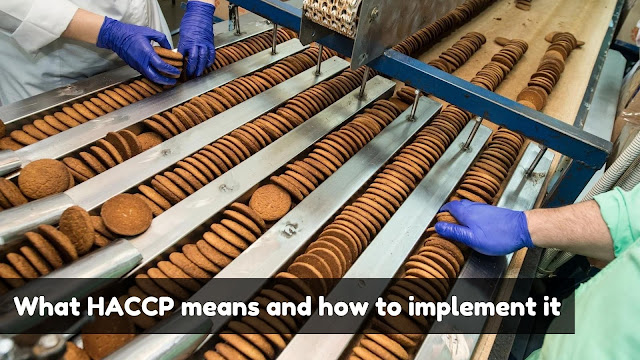Hazard Analysis Critical Control
Points (HACCP) is the fundamental idea whereupon all universally perceived food
safety management programs are assembled. For food processors and
makers, understanding HACCP is basic to carry out frameworks and strategies
that limit risk, keep the public safe, and maintain an organization's standing
in this competitive world.
This article on food safety and
physical contaminant detection makes sense of what HACCP is, what the reason
behind HACCP is so significant in the food business, and what carrying out a
HACCP program involves.
What is HACCP?
HACCP represents Hazard Analysis and
Critical Control Points and refers to a universally perceived strategy for
lessening food safety risks in facilities that assemble, cycle, or handle food
products. HACCP includes recognizing and evaluating the likely source of food
safety hazards to lay out a technique for proactively controlling for and
diminishing risk.
HACCP standard emphasizes controlling
for preventable and eliminable food safety hazards
Through two key parts:
• Hazard examination refers to
recognizing and breaking down the food safety present in a food process cycle.
Specifically, risk examination centers on assessing likely hotspots for
microbiological, chemical, and physical contamination.
• Basic critical control point refers
to entering junctures in a food processor and taking care of the cycle at which
controls can be applied to forestall or kill food safety hazards, or to lessen
the chance to a satisfactory level.
For what reason is HACCP significant in the food business?
As a proactive cycle control
framework, HACCP is essential for distinguishing and forestalling hazards in
food production to more readily safeguard general public health. As opposed to
just controlling for significant food takes a chance after food items have been
handled and packed, a HACCP plan includes rigorously checking each step of the
food creation process to control contamination risk from happening in any case.
When is the execution of a HACCP plan required?
As a result of its viability in
contamination hazards or risks of contamination, the HACCP technique is the
reason for all universally perceived food safety rules and numerous food safety
regulations. Getting Hazard Analysis Critical Control Point HACCP Certification from any notified
body licensed by the Global Food Safety Initiative will constantly include
executing and recording a compelling HACCP plan.
Food Safety System Certification in light of ISO 22000
There are two phases of arranging
engagement with the advancement of a HACCP plan. The first phase of making a HACCP Plan
includes grasping the particular circumstances, items, and cycles in the
facility. Deciding and acquiring knowledge about 7
principles of HACCP and plan and how to implement it. This can be self
or with proper training provided by a consultancy firm. The subsequent stage
includes applying the HACCP system to compose a significant arrangement that is
tweaked to the requirements of the facility.
Five fundamental stages in fostering a HACCP plan
Before a food dealing organization
can start to compose a HACCP plan, there are five fundamental stages to follow.
Every one of these primer HACCP arranging steps will assist the organization
with getting a comprehensive picture of risk and responsibility obligation
inside the food handling facility in the organization.
- Assemble a dedicated HACCP team to
incorporate proper development of the HACCP plan.
- Describe the products and the processes to
be used, and carried out in the plant.
- Develop a complete list of ingredients and raw materials used
in a food product or process in the facility to help companies zero in on
risk areas.
- Develop a process flow diagram as an accurate representation of how products are made.
- Ensure compliance with sanitation requirements to upheld before a HACCP plan can be drafted

No comments:
Post a Comment